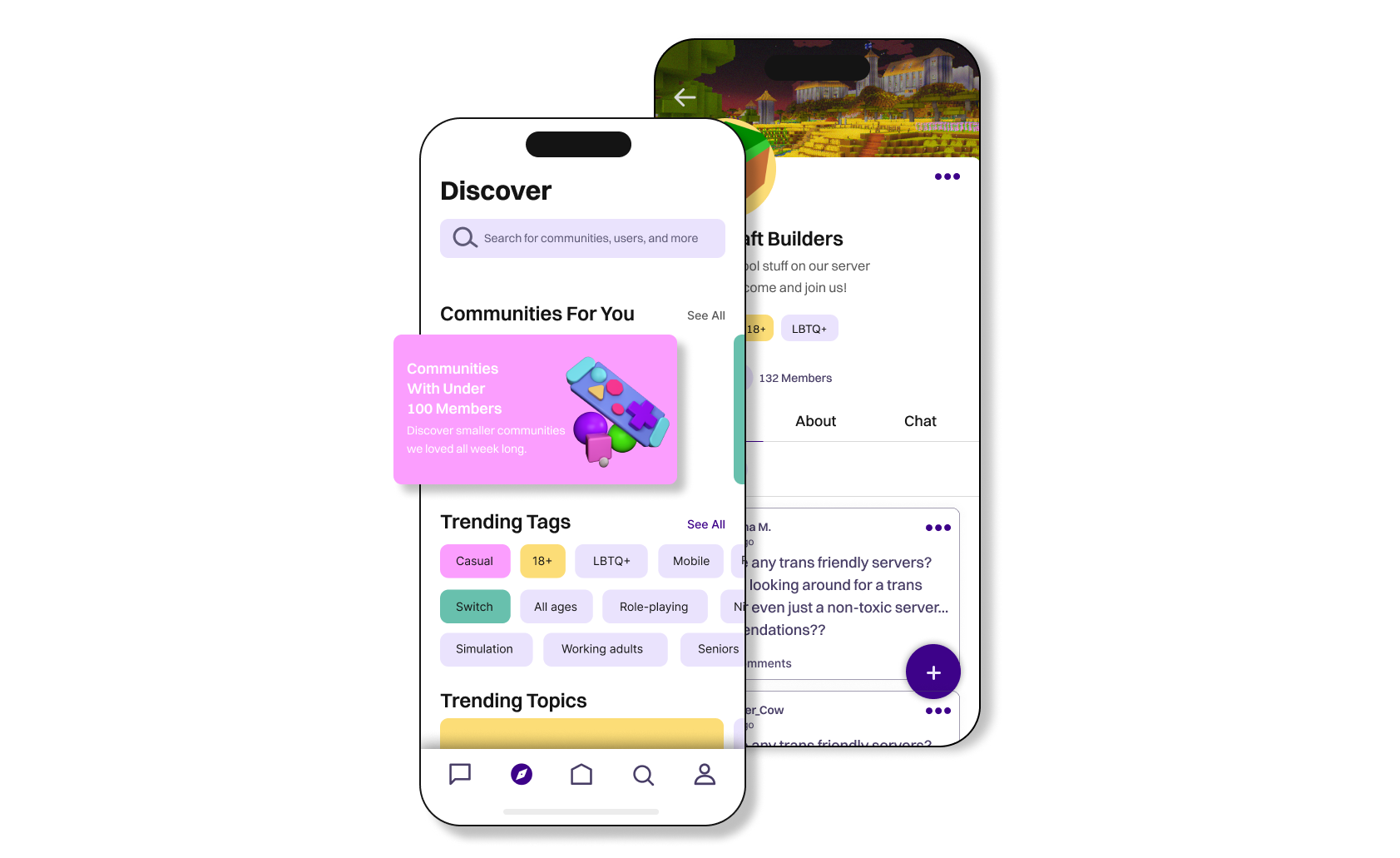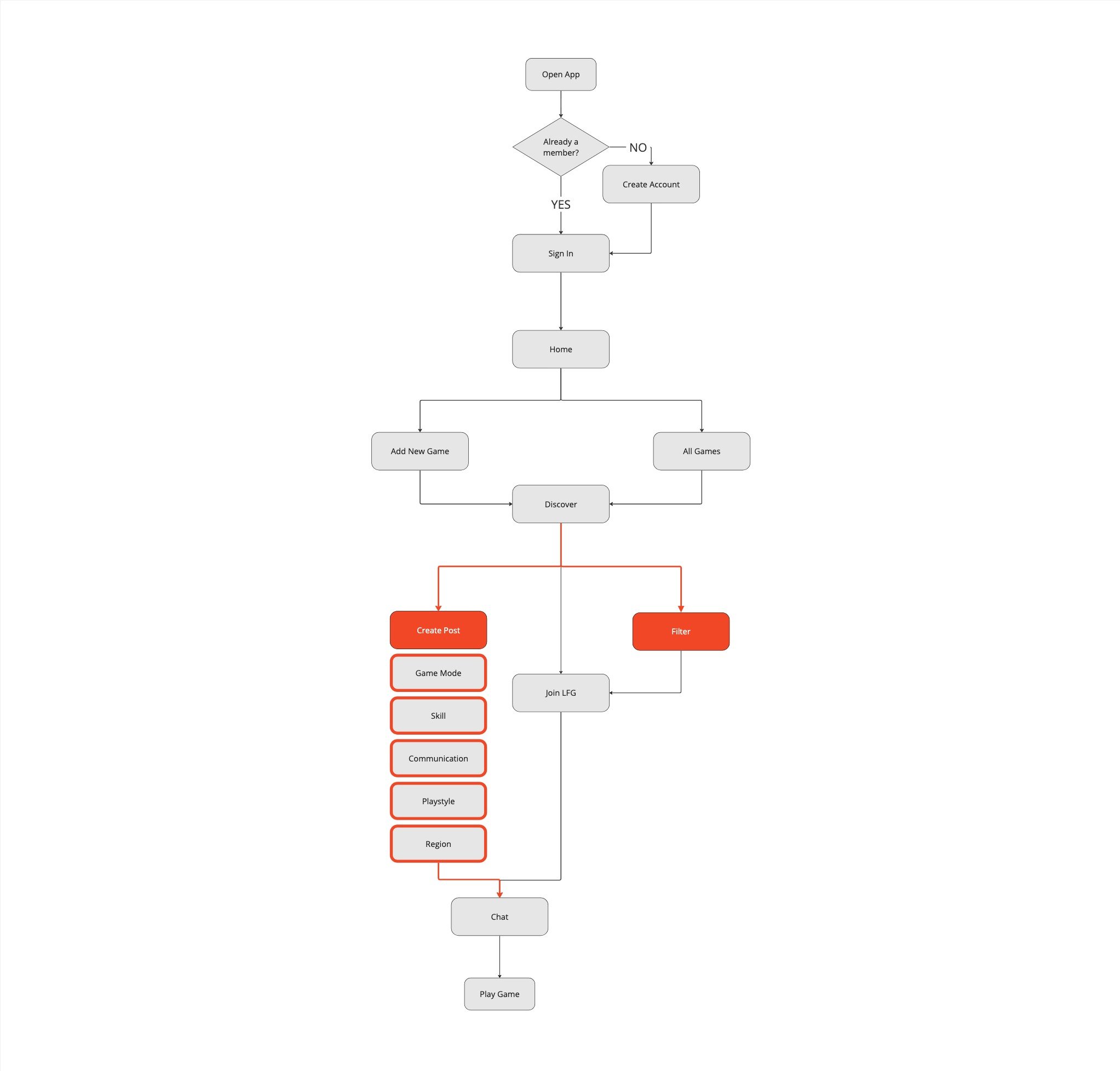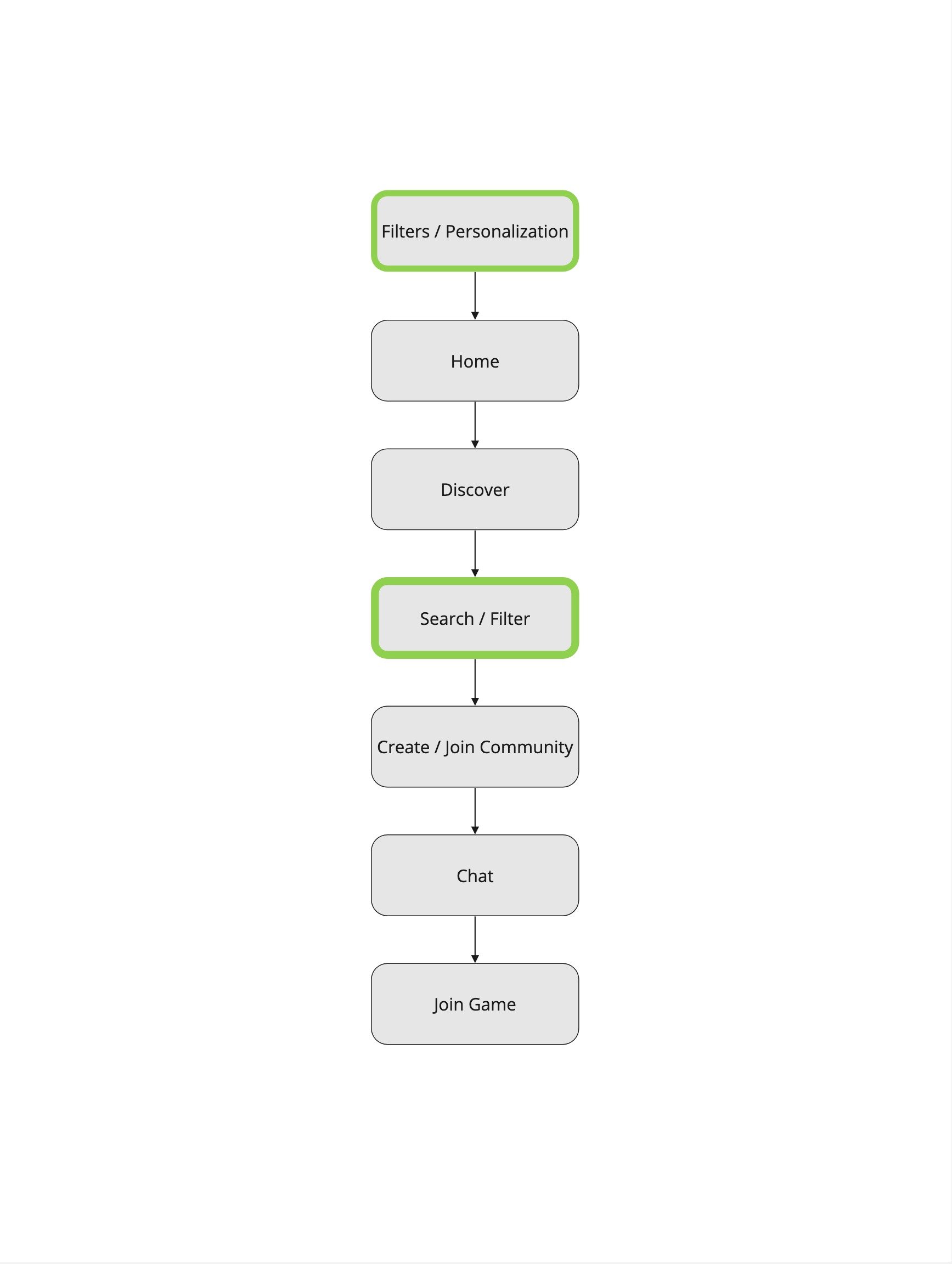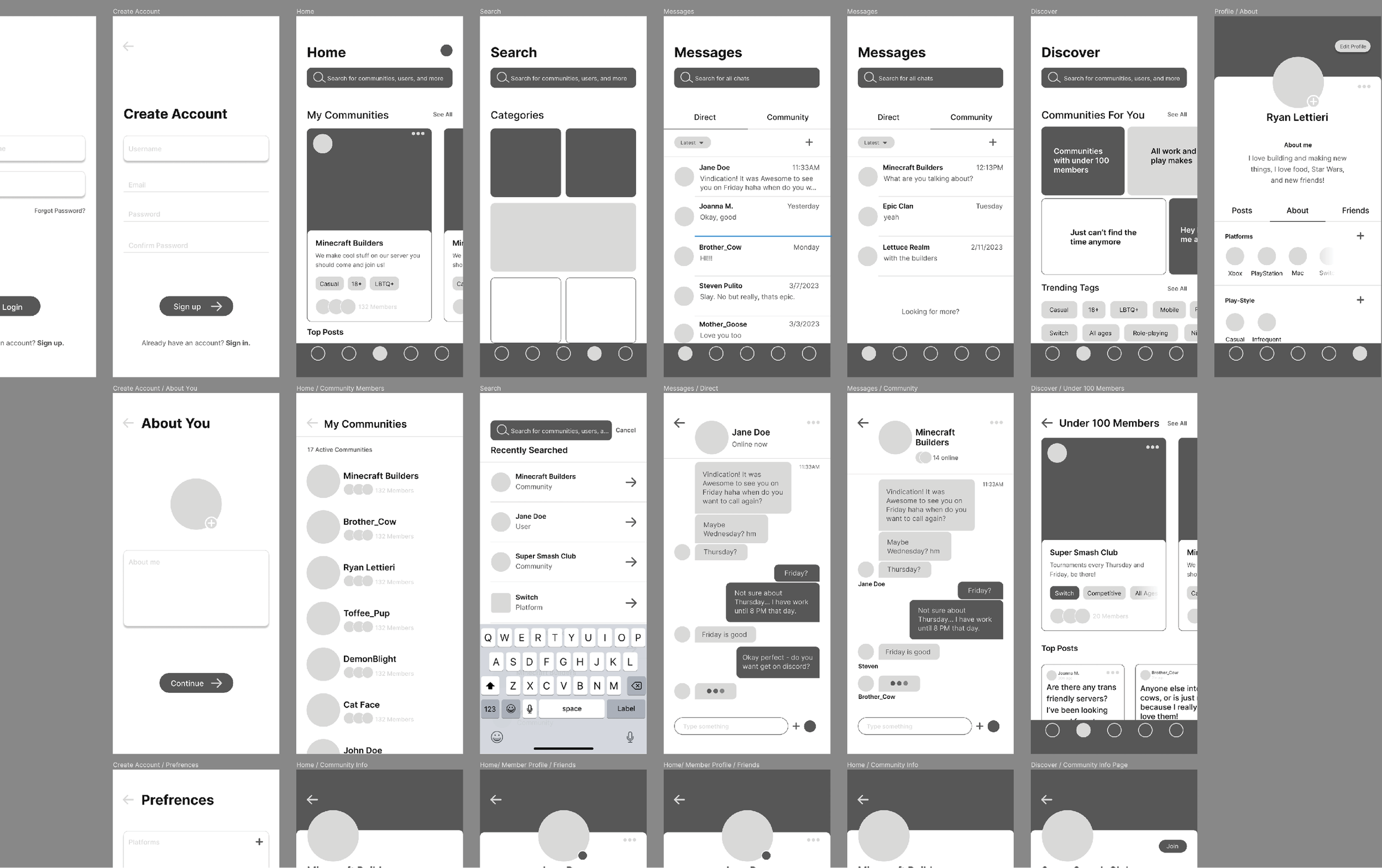Nexus
An accessible mobile app that connects gamers who have difficulty making friends in a community-focused space.
Background
With the surge in gaming popularity in the U.S., notably among Gen Z and Millennials, it's now simpler than ever to stay connected with friends worldwide. Nevertheless, not everyone has someone to play with. As anxiety and depression rates rise, more young individuals enter virtual spaces alone with inadequate tools to find friends. While online forums, in-game resources, and some apps may help, they lack a comprehensive approach. Having experienced this myself, I was inspired to create a product for individuals in similar situations.
The user wants to discover like-minded players who share their gaming style and can collaborate effectively while enjoying their favorite game.
TEAM
Myself
TOOLS
Figma, Indesign, Illustrator, Miro, Cinema4D
TIMELINE
April 2023—May 2023 (7 weeks)
My Role
As a UI/UX designer, I…
RESEARCHED
Conducted literature review and user research to understand the desires and pain points of users.
IDEATED
Ideated concepts through drawing and wireframing aligning to the user journey.
SYNTHESIZED
Synthesized concepts into a cohesive design system, using typographic and illustrative interfaces.
My Assumptions
New users are less likely to use in-game social resources because they can be toxic to inexperienced players.
People are dissuaded from joining large in-game social groups like clans because they feel nervous participating in front of so many new people.
People can be put off from playing some online games if they don’t have others to share it with.
People are less likely to use an app that uses a matching feature and is too focused on one-on-one meet ups.
Initial Research
Literature Review
I did a review of literature primarily in the field of sociology, asking one key question:
What is the psychological framework that describes making connections online?
💡Insight #1
Community based organization best meets the social requirements of online interaction, fostering social proximity for multiple users rather than one-on-one.
💡Insight #2
Gamers need time and space outside of a game environment to form supportive friendships.
Reviews & Comments
I reviewed user reviews under applications that perform the same or similar functions, then consolidated my insights into three key categories.
Personalized
Niche interests
Low maintenance
Indie dev representation
Filtering
Community
Discussion & sharing
Cross-platform
Group management
Clan customization
“It’s usually a one and done thing and they almost never want to play after that one time… you never play the same person twice. It’s kinda disheartening to even try.”
“Had a lot of people send me invites but non of them actually wanted to play when it came time… Needs to be more filters for finding people in the same age range and people who have the same device as you.”
User Experience
User Personas
To more narrowly understand my target users, and to better hone in on their pain points, I created two user personas of differing demographics and gamer types.
Current User Journey (GamerLink)
GamerLink has few filters and are placed deep within the user flow, but users want quick and consistent access to filtering. This presents a major pain point.
Opportunities & Pain Points
Competitor Pain Points
Trust
Developer accountability
Hostile environment
Diversity & inclusion
Direct messaging
“There are quite a few games missing, and I still can’t seem to find Guilty Gear Strive on the game search.”
“This app can be a place to make friends but it is generally not a safe space for women… it became very clear women stand out on this app and are easily targeted”
Problem Statement
How might we create an approachable experience that connects gamers of all types who have difficulty in online social spaces?
I created high fidelity mockups of an application that combines community centric space with direct and group messaging, play-style filters, and a discovery page.
Solution
New User Flow
Gamer’s don’t want to feel unsafe in communities or see players that don’t share their interests. So, I gave them the option to personalize their profile and put filtering up front, giving users more agency and better options.
Initial Concept
Low Fidelity Mockup
From my research and proposed solution, I created a low-fidelity mockup in Figma to visual formalize my concept and begin to build out a feature set and my user’s journey.
Final Development
Design System
Log-in
Home
Discover
Profile / Messages
Key Takeaways & Next Steps
USER MAPPING
As my first major foray into user research, I learned new methods of mapping to more acutely understand my data
In the future, I will use and implement more complex kinds of user mapping like a more robust user journey to better understand how users want to interact with my system
USER TESTING & FEEDBACK
The next step of this project is to have users in my target demographic use my mockups and give me feedback
Implement feedback from users and build a higher fidelity prototype









